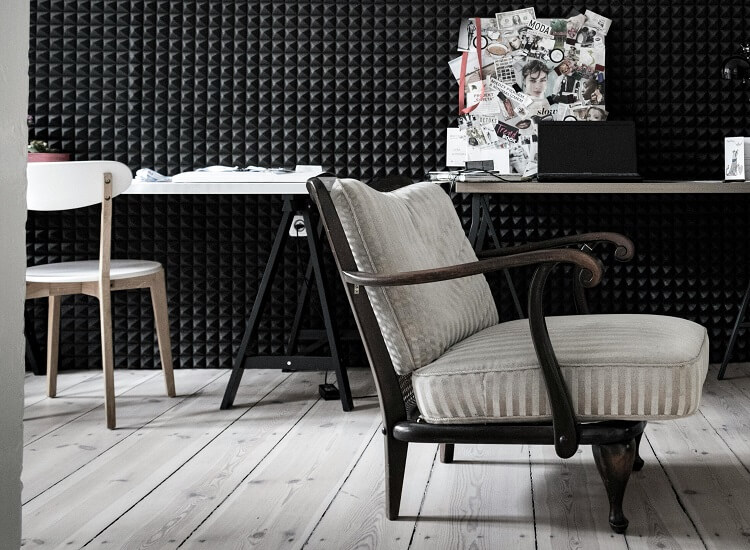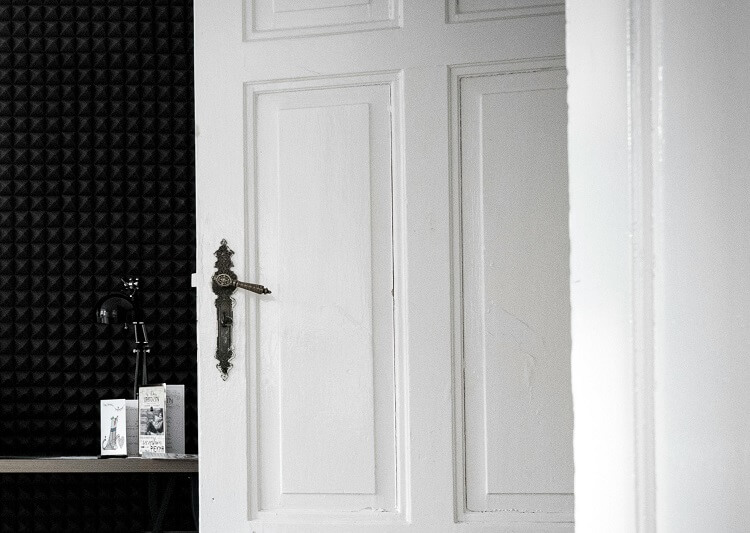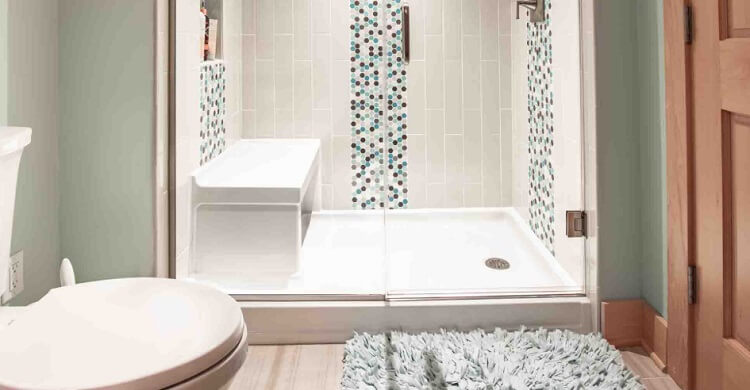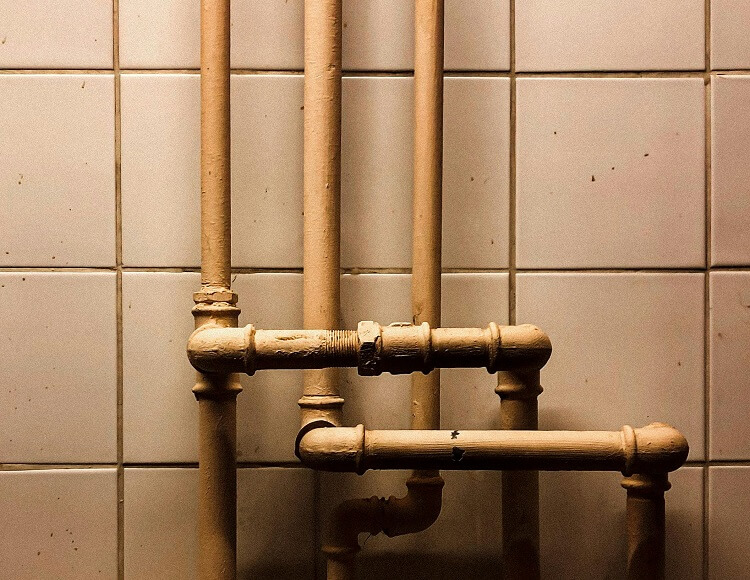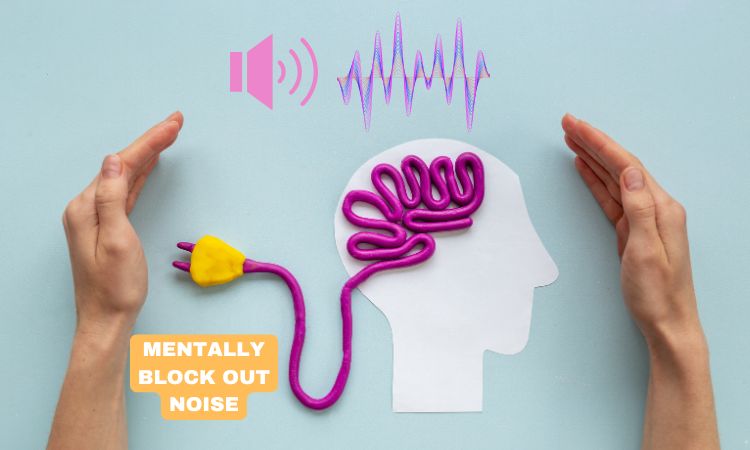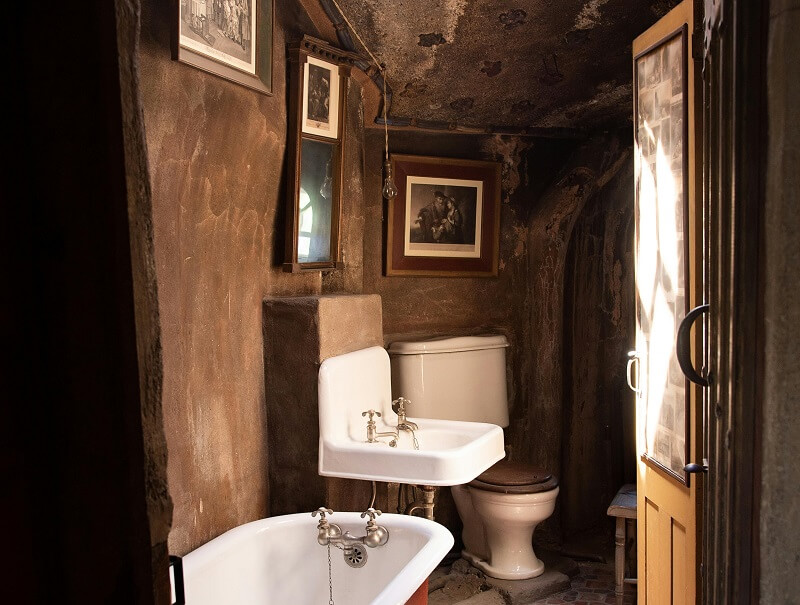
Bathroom noise can be a real nuisance, disrupting the tranquility of your home and compromising privacy. If you’re wondering how to soundproof a bathroom door, this guide offers a range of practical and budget-friendly solutions to help you create a more peaceful and private bathroom environment. By addressing noise leaks effectively, you can enhance comfort for everyone in your home.
What Makes Bathroom Doors a Noise Problem?
Bathroom doors are often culprits of noise leakage due to their construction and typical installation.
Hollow-core doors, commonly used in many homes, are inherently less effective at blocking sound compared to solid-core alternatives. This is because the hollow interior allows sound waves to vibrate and transmit through the door more easily. Gaps around the door frame and beneath the door exacerbate the problem, providing pathways for sound to escape.
Addressing these weak points is crucial for effective sound insulation.
Tools and Materials Needed for Soundproofing
Before you begin, gather the necessary tools and materials. The specific items will depend on the soundproofing methods you choose, but here’s a general list:
- Weatherstripping tape
- Door sweep
- Acoustic foam panels
- Soundproof blankets or curtains
- Mass-loaded vinyl (MLV)
- Solid-core door (if replacing)
- Acoustic caulk
- Measuring tape
- Utility knife
- Screws (optional)
- Adhesive
Assessing the Bathroom Door’s Weak Points
Identifying the source of noise leaks is the first step in effective soundproofing. Inspect your bathroom door for the following:
- Gaps Around the Door Frame: These gaps allow sound to travel directly through the frame.
Use a flashlight to check for light passing through, indicating air gaps.
- Under-Door Gap: The space between the door and the floor is a major culprit for noise leakage. Measure the gap to determine the appropriate size door sweep.
- Hollow Door Construction: Knock on the door. A hollow sound indicates a hollow-core door, which transmits sound more readily than a solid-core door.
Solutions for Soundproofing a Bathroom Door
Adding Weatherstripping
Weatherstripping seals gaps around the door frame, preventing sound from escaping.
Applying adhesive-backed weatherstripping tape along the edges of the door frame is an easy and inexpensive solution. Choose a durable material like rubber or foam for optimal sound reduction.
Installing a Door Sweep
A door sweep blocks the gap beneath the door. Opt for a rubber or silicone sweep for effective soundproofing.
Attach it to the bottom edge of the door, ensuring a snug fit against the threshold when the door is closed. This significantly reduces noise transmission.
Applying Acoustic Foam Panels
Acoustic foam panels absorb sound waves, reducing reflections and echoes within the bathroom. Applying these panels to the inside surface of the door can further dampen noise.
Choose panels with adhesive backing for easy installation. While effective, they may alter the door’s appearance.
Using Soundproof Blankets or Curtains
Hanging soundproof blankets or curtains over the door is a temporary solution, ideal for renters. These specialized blankets are designed to absorb sound waves.
Ensure the blanket covers the entire door for maximum effectiveness. However, this method is less effective than more permanent solutions.
Replacing a Hollow-Core Door
Replacing a hollow-core door with a solid-core door is the most effective long-term solution. Solid-core doors are denser and significantly reduce sound transmission.
While this option is more costly, it offers superior sound insulation. Consider doors filled with composite materials or solid wood for optimal performance.
Sealing the Door Frame with Acoustic Caulk
Acoustic caulk fills small cracks and gaps around the door frame, creating an airtight seal. This is particularly effective for older door installations where gaps may have developed over time.
Apply the caulk neatly and allow it to dry completely.
Adding Mass-Loaded Vinyl (MLV)
Mass-loaded vinyl (MLV) is a dense, flexible material that effectively blocks sound transmission. By adding mass to the door, MLV reduces the energy of sound waves passing through. It can be attached directly to the door surface using adhesive or screws.
This professional-grade solution offers excellent soundproofing but can be challenging to install neatly.
Installing a Soundproof Door Kit
Soundproof door kits offer a comprehensive solution by combining multiple elements like seals, sweeps, and sometimes even a sound-dampening door cover. These kits are convenient and provide a professional-looking finish. They are particularly useful for those looking for an all-in-one solution.
Comparing Costs and Effectiveness of Soundproofing Methods
| Method | Cost | Difficulty | Effectiveness |
|---|---|---|---|
| Weatherstripping | $5-$20 | Easy | Moderate |
| Door Sweep | $10-$30 | Easy | High |
| Acoustic Foam Panels | $20-$50+ | Medium | Moderate |
| Soundproof Blankets | $30-$100+ | Easy | Moderate |
| Solid-Core Door | $150-$500+ | Hard | Very High |
| Acoustic Caulk | $5-$15 | Easy | High |
| Mass-Loaded Vinyl (MLV) | $50-$100+ | Medium | Very High |
| Soundproof Door Kit | $100-$300+ | Medium | Very High |
Expert Tips for Optimal Bathroom Door Soundproofing
- Combine Methods: Combining multiple methods, like weatherstripping and a door sweep, often yields the best results by addressing different leakage points.
- Inspect Surrounding Areas: Don’t limit your inspection to the door.
Check nearby walls, vents, and windows for additional noise leakage points.
- Maintain Materials: Regularly inspect and maintain soundproofing materials. Replace worn-out weatherstripping or door sweeps to ensure continued effectiveness.
FAQ
What is the best material for soundproofing a door?
Solid-core doors, particularly those filled with dense materials, and mass-loaded vinyl (MLV) are highly effective for blocking noise due to their density and sound-dampening properties.
Can I soundproof a door without replacing it?
Yes, several effective methods don’t require door replacement, including weatherstripping, door sweeps, acoustic foam, soundproof blankets, and applying MLV to the existing door.
How much does it cost to soundproof a bathroom door?
Costs vary significantly depending on the chosen method. Simple solutions like weatherstripping can cost as little as $5-$20, while replacing the door with a solid-core model can range from $150-$500+, plus potential installation costs.
Professional-grade soundproofing using MLV or specialized door kits can cost $100-$300+.
Conclusion
Soundproofing your bathroom door is a worthwhile investment that enhances privacy and creates a more tranquil home environment. From simple fixes like applying weatherstripping to more involved projects like replacing the door with a solid-core option, there are solutions to fit every budget and level of DIY skill. By implementing these techniques, you can significantly reduce noise transmission and enjoy a quieter, more comfortable bathroom experience.

